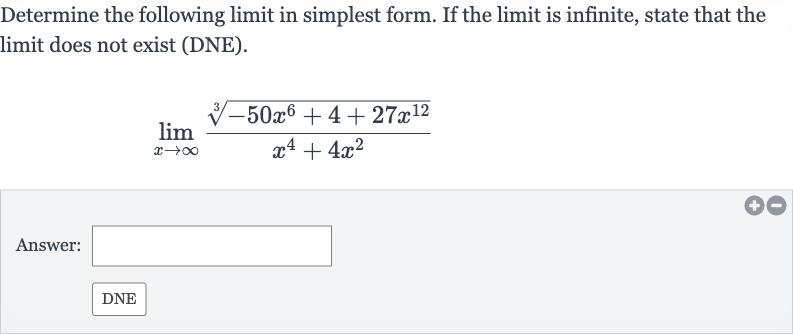Full solution
Q. Determine the following limit in simplest form. If the limit is infinite, state that the limit does not exist (DNE).Answer:
- Observe Highest Powers: To find the limit of the given expression as approaches infinity, we first observe the highest powers of in the numerator and the denominator. In the numerator, the highest power is inside the cube root, which simplifies to outside the cube root. In the denominator, the highest power is . We will divide both the numerator and the denominator by to simplify the expression.
- Divide by : Divide each term in the numerator and the denominator by :Simplify the expression:
- Simplify Expression: As approaches infinity, the terms with negative powers of will approach zero. Therefore, in the numerator and in the denominator will become negligible:Simplify the expression further:
- Approaching Infinity: Now, we can take the cube root of the terms inside the root separately since the limit of a sum is the sum of the limits:Simplify the cube roots:
- Take Cube Roots: As approaches infinity, the term with the higher power of will dominate. In this case, will grow much faster than , so the latter term becomes negligible:
- Dominant Term: The limit of as approaches infinity is infinity since the power of is positive:Therefore, the limit does not exist (DNE).

